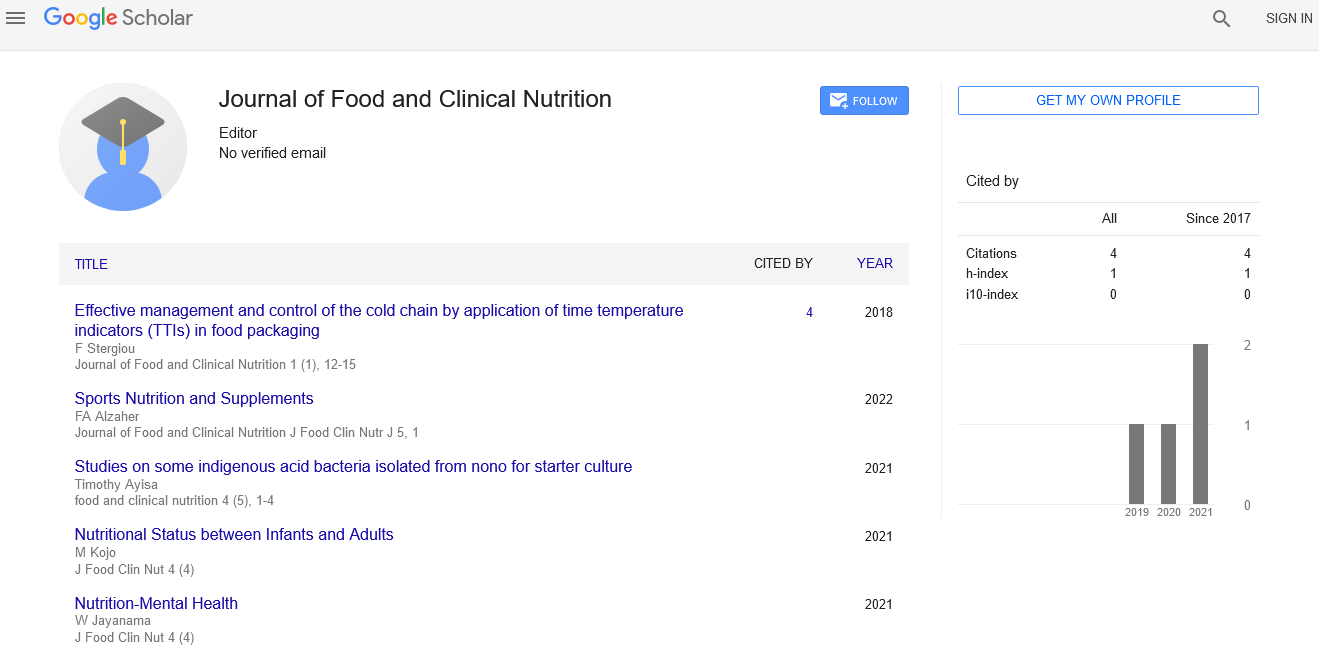It’s all in the sourdough!
Received: 10-Feb-2024, Manuscript No. puljfcn-24-5416; Editor assigned: 12-Feb-2024, Pre QC No. puljfcn-24-5416 (PQ); Accepted Date: Feb 20, 2024; Reviewed: 20-Feb-2024 QC No. puljfcn-24-5416 (Q); Revised: 24-Feb-2024, Manuscript No. puljfcn-24-5416 (R); Published: 10-Mar-2024
Citation: Nagpal D. It��?��?��?���¢��?��??��?��??s all in the sourdough!. J. Food Clin. Nutr. 2024; 7(1):1-2.
This open-access article is distributed under the terms of the Creative Commons Attribution Non-Commercial License (CC BY-NC) (http://creativecommons.org/licenses/by-nc/4.0/), which permits reuse, distribution and reproduction of the article, provided that the original work is properly cited and the reuse is restricted to noncommercial purposes. For commercial reuse, contact reprints@pulsus.com
Abstract
Creating a well-cultured loaf from water, salt, flour, and air microbes is a beautiful biochemical and microbial process. Sourdough differs from most types of bread because it doesn't contain baker's yeast. It contains a naturally fermented culture starter, which is typically usedto bake sourdough bread. It is the most ancient way of making bread and has regained its importance as of late. I always wanted to try my hands on sourdough bread, and luckily, I met a friend who taught me the technique. For the past two years, sourdough bread baking has become a Sunday ritual for me, and I bake at least two to three loaves for the week.
Key Words
Fib; Food; Fermentation
SCIENCE BEHIND SOURDOUGH
sourdough making is a hetero fermentative process. Everything from microbes in the environment to the chef's hands, to weather, temperature, humidity, the flour used for the culture starter contributes to the flavor and texture of this loaf.
Predominantly, wild yeast saccharomyces strains and lactic acid bacteria strains are found in sourdough loaves, which help with fermentation. These microorganisms break down starches to produce carbon dioxide gas. It also helps in expanding and trapping the gas and giving a softer texture to the loaf.
WHY IS SOURDOUGH BETTER THAN OTHER BREAD?
This traditional way of baking bread is unique and has various advantages over other types of bread.
1. Distinctive flavour: It has a tangy flavour due to fermentation, making the taste more nuanced.
2. Aroma: It has a distinctive aroma, which can be subtle or sharp, depending on how long the dough is fermented.
3. Texture: Each slice of the loaf is chewy and has a crispy crust.
4. It also has a better shelf life than other types of bread.
5. There is no use of chemicals or preservatives during sourdough preparation.
6.This type of bread is easily digestible as the pH of sourdough bread is low, with a more acidic environment lowers the phytic acid content by increasing enzymatic activity like amylase, protease.
7. Breakdown of gluten also makes digestion better since it decreases gluten level.
8. Nutrient Availability: Sourdough has more nutrients like folic acid, zinc, selenium, magnesium, manganese, Vitamin B complex than other types of bread. Moreover, the absorption is much better due to low phytic acid content
9. Glycemic Index: The Glycemic Index of sourdough is known to be lower than other types of bread. For people with blood glucose sensitivity, small amounts of sourdough bread are better tolerated than other bread.
10. Probiotic: It can improve gut microbiota by adding beneficial microbes to the gut, which helps with numerous body functions from skin health, digestion to disease prevention.
CONS
1. The very high fibre flour used for sourdoughs can activate lipase activity which further can cause fat oxidation. The free fatty acids in this type of bread are responsible for rancidity.
2. People with issues like hyperacidity, SIBO (Small intestinal bacterial overgrowth), food intolerances, IBS (Irritable Bowel Syndrome) can have issues with a large amount of bread.
SOLUTIONS TO AVOID THE CONS
1. Try gluten-free flours and low FODMAP flours to bake your bread.
2. Try an elimination diet and then slowly introduce sourdough in small amounts.
I believe sourdough has become more popular since the pandemic. And although food trends usually come and go, considering all the benefits of this one, I would recommend keeping sourdough bread in your kitchen for a long time.





